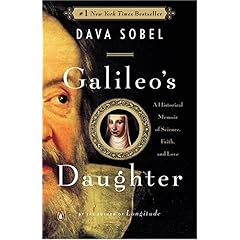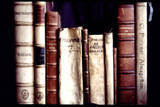 It seemed much easier to get beatification bestowed than to capture a coveted open
It seemed much easier to get beatification bestowed than to capture a coveted open  invitation into the depths of the Vatican's secret archives. This is a universal church that took 400 hundred years to agree Galileo was right in his support of Copernicus's reasoning that the earth moved around the sun, final formal recognition of proven fact came in in 1992. The Vatican's magnificent art archives and extensive museum artifacts are legendary. Vault archives remained shrouded in lore, mystery and secrecy. The former Holy Office records from a few centuries past outline the terror visited upon the French Huguenots, among assorted others, opened to allow a very few select scholars to review certain archived material in 1998. Now History of the Inquisition is available to the lay person in the form of a museum exhibition. But hurry, like cereal coupons and sainthood, this limited visit offer ends 16 March, 2008. The Vatican museum and the Archives are next door one another in Vatican City. (Some may recognize the Museum's stairway)
invitation into the depths of the Vatican's secret archives. This is a universal church that took 400 hundred years to agree Galileo was right in his support of Copernicus's reasoning that the earth moved around the sun, final formal recognition of proven fact came in in 1992. The Vatican's magnificent art archives and extensive museum artifacts are legendary. Vault archives remained shrouded in lore, mystery and secrecy. The former Holy Office records from a few centuries past outline the terror visited upon the French Huguenots, among assorted others, opened to allow a very few select scholars to review certain archived material in 1998. Now History of the Inquisition is available to the lay person in the form of a museum exhibition. But hurry, like cereal coupons and sainthood, this limited visit offer ends 16 March, 2008. The Vatican museum and the Archives are next door one another in Vatican City. (Some may recognize the Museum's stairway)
 The Holy Office "wanted total control," said Monsignor show's curators and on the staff of the Congregation for the Doctrine of the Faith, Alejandro Cifres, previously known as the Holy Office.
The Holy Office "wanted total control," said Monsignor show's curators and on the staff of the Congregation for the Doctrine of the Faith, Alejandro Cifres, previously known as the Holy Office.Sins of the church involving torture and persecution are absent in these documents and may have been burned at the stake. There are heresy trial records and more recent archives are under assault. The Roman Curia runs the Holy See's bureaucracy. One fly landed in the Saints R Us in a Century Department's anointing ointment as a direct result of a pope's silence/prudence during the Holocaust. There are strident calls that the march to sainthood for Pius XII be stopped in its turtle swift tracks until the church opens its World War II archives.The Holy Office relied on reports from Dominicans, Franciscans and lay people, he said, and the Church had a "network" of monitors.
Napoleon's forces carted off bundles of documents from the Holy Office.
After his fall in the early 1800s, the French government wanted to return the material but the cost of transport was too high, Cifres said, and the order went out from Rome to burn many of the files. (AP Photos)
Ongoing quests continue to gain fuller access to the Vatican's records on a number of topics.Last May, the Vatican's saint-making department voted in favor of a decree
"Some people talk about problems that in reality don't exist, I believe. Many say: 'It's not going forward because he is famous for his silence in condemning Nazism, that he didn't condemn Nazism," he said.recognizing Pius's "heroic virtues," a major hurdle in a long process toward sainthood that began in 1967.
"This is not historically accurate. Instead of silence, I would speak of 'prudence'. There was not silence."
The Vatican maintains Pius did not speak out more forcefully against the Holocaust because he was afraid of provoking Nazi reprisals and worsening the fate of Catholics and Jews.

Dava Sobel brought Galileo back into the modern mind with a ringing authenticity in Galileo's Daughter: A Historical Memoir of Science, Faith, and Love as the letters reach back to us between father and beloved daughter.











1 comment:
This seems relevant: The historical society I work for, Western Reserve Historical Society ( http://www.wrhs.org ), is hosting the Vatican Splendors exhibit coming this summer. Rare treasures will be coming to a very small selection of cities in the world. WRHS is lucky enough to have earned a spot on the list.
http://www.vaticansplendors.com/en/cms/?23
Post a Comment